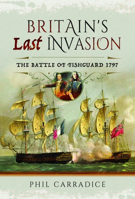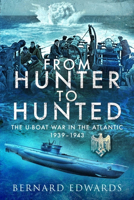Author: Serena Cant and Aidan Dobson
Published: April 2020
Serena Cant and Aidan Dobson set themselves the daunting task of seeking to provide ‘a near-definitive list’ of the warships, submarines and major auxiliaries that were taken from the defeated powers to be disarmed, disposed of, or put to an alternative use. The book includes some fascinating ‘vessels’ – including the special tubular docks built by the German navy to pressure-test submarines, one of which
was subsequently used as a salvage platform in the UK.
There are also some great stories, such as the German submarine U155, which was originally built as a cargo-carrying merchant vessel. After the war, it was bought by the MP Horatio Bottomley with the aim of touring UK ports to raise money for King George’s Fund for Sailors (now known as Seafarers UK). Sadly, the tour made a loss, despite the vessel having some 150,000 visitors, and Bottomley was later jailed for fraud. While many of the seized ships were scrapped, a considerable number were used for weapons testing or engine and technical trials. The innovative twinhulled German submarine salvage ship Vulcan became the Royal Fleet Auxiliary vessel Cyklop, but was disposed of after it was deemed to be something of a white elephant. Other warships were turned into merchant vessels as part of a swordsto-ploughshares programme. There were some amazing conversion projects – such as the pressure hulls of German submarines being used to make oil lighters and tankers, destroyers being turned into trawlers or coasters, and minesweepers becoming ferries. Some German submarine engines were used to generate electricity in local projects in England and Northern Ireland, while another was used at the Watney’s brewery in London. One Second World War German minesweeper went on to have a long post-war career as a ro-ro ferry, operating for Italian owners until sinking while under tow to the breakers in 2006. A German sail-training ship, allocated to the US after the war, eventually ended up with the Portuguese Navy and is still in service today.
As well as investigating the destiny of so many ships, the book also describes some of the tricky politics surrounding the division of the seized fleets between the victorious nations – with some of Japan’s WW2 fleet being distributed by countries drawing lots. Domestic politics may also have been at play with the decision to use the German replenishment ship Nordmark under Royal Navy colours rather than as a RFA tanker, as originally planned.
The well-illustrated book has extensive lists with details of the hundreds of vessels acquired by the victorious powers after both wars and notes on their subsequent service or disposal. It is a sign of the depth of the research that so few entries are listed as ‘fate uncertain’. It’s just a shame that the authors did not extend the work to include national commercial assets such as ocean liners and other merchant vessels, which were part of the surrender agreements, because there must surely be many equally fascinating tales to be told there.


























